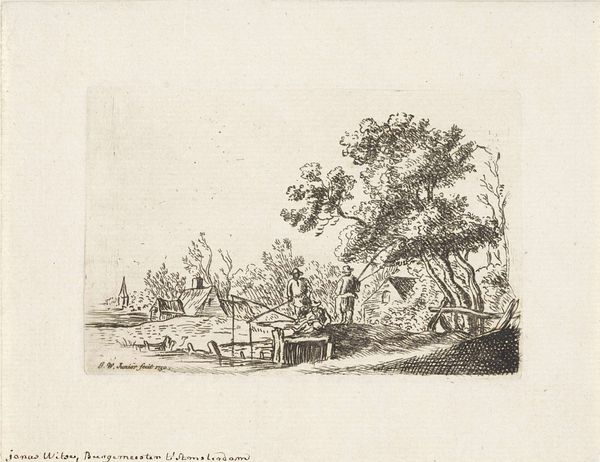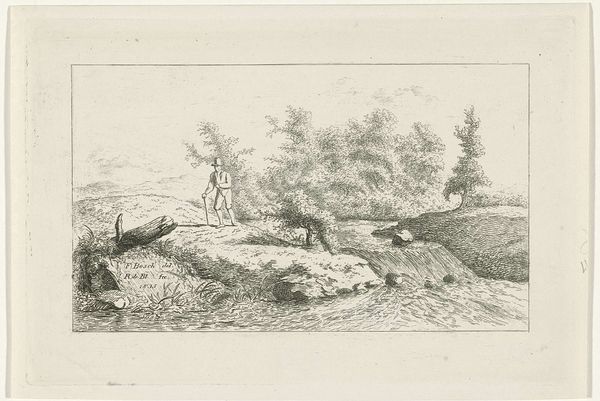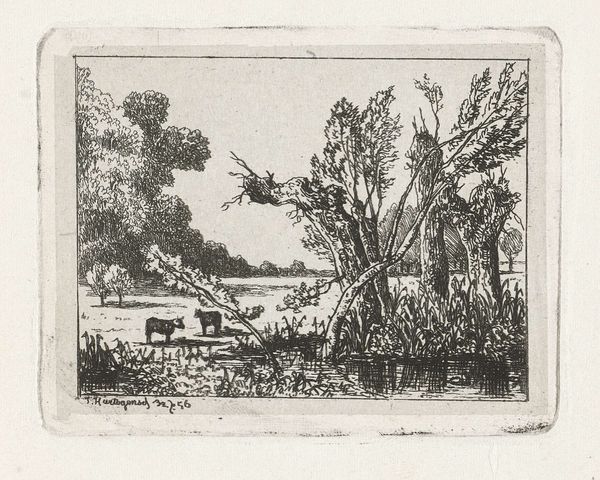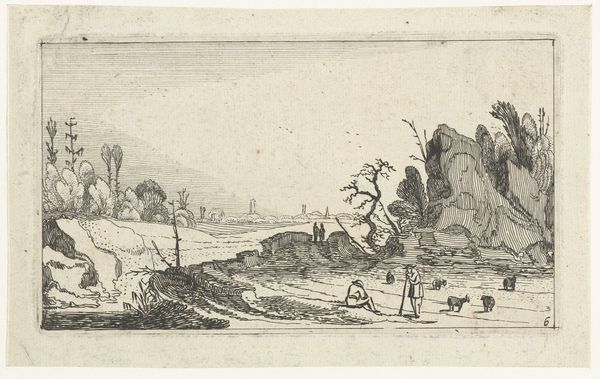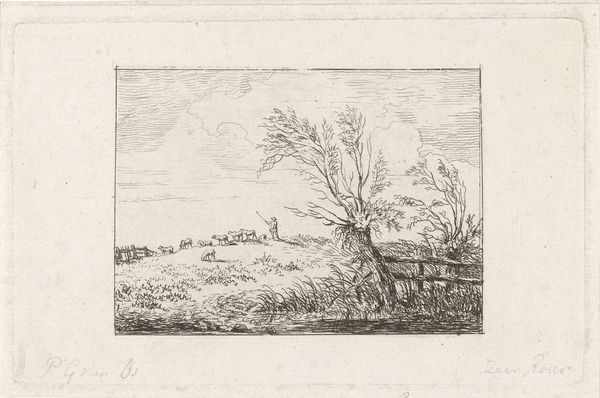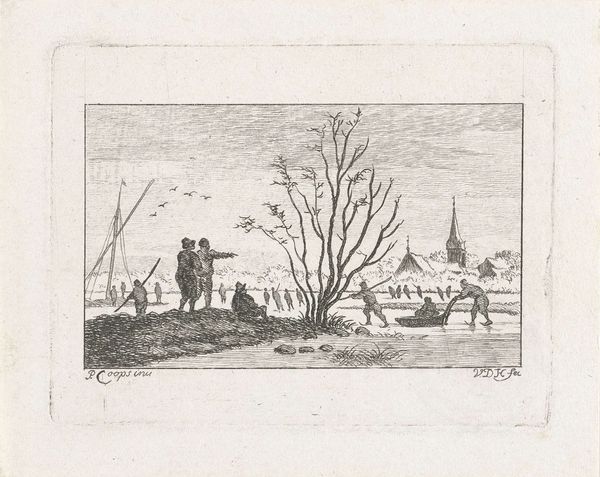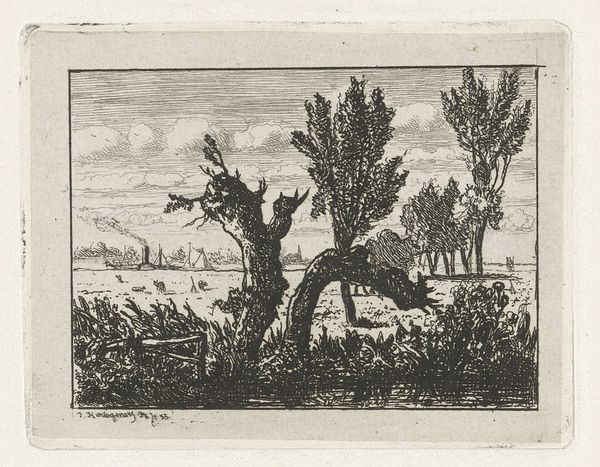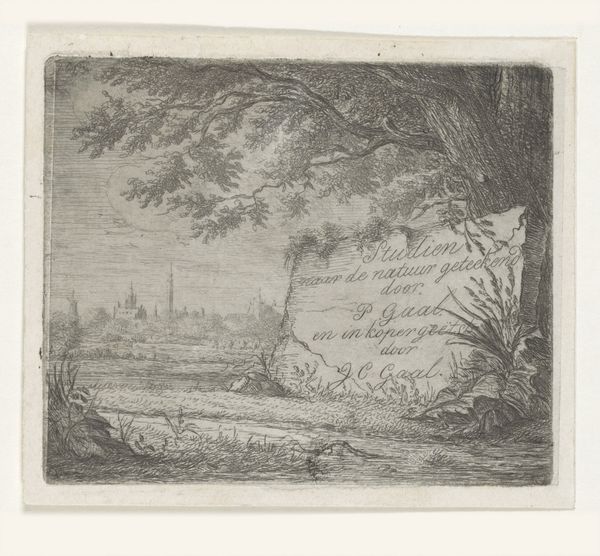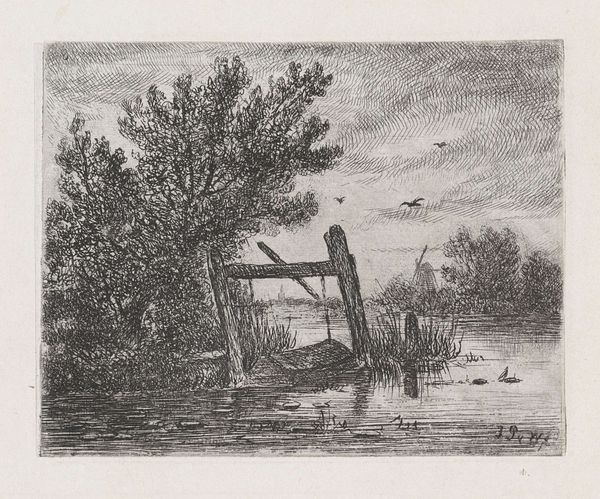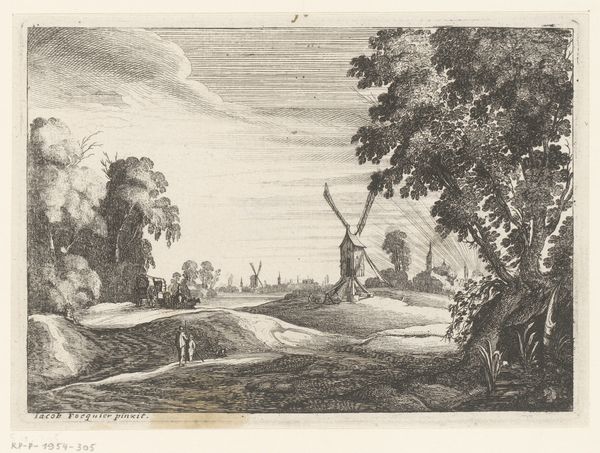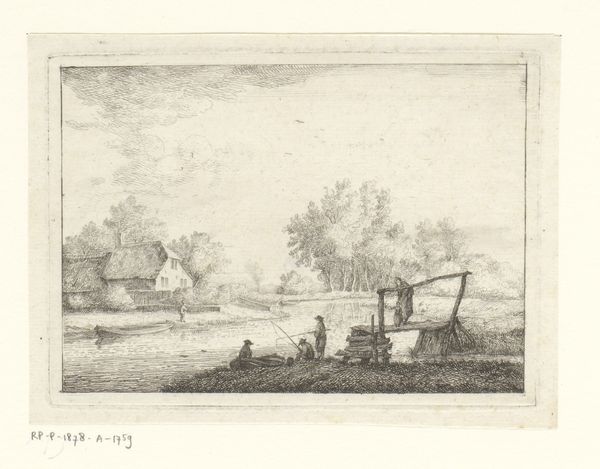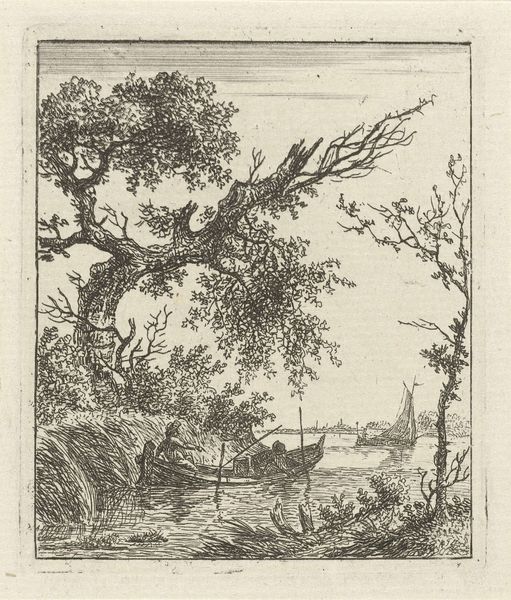
Dimensions: height 75 mm, width 97 mm
Copyright: Rijks Museum: Open Domain
Editor: Here we have "Man bij een boot" created by Anthonij van der Haer between 1745 and 1785, using etching. It's such a detailed scene for a print. The texture in the water and trees really jumps out. How would you interpret this work? Curator: Looking at the etching, I am drawn to the processes that underpin it. The labour involved in creating such fine lines repeatedly to compose this landscape reveals much. Consider how the printing process itself – a method of mass production – intersects with the depiction of daily life, perhaps alluding to emerging mercantile activities? Editor: That’s interesting. So, the choice of etching reflects broader social changes? Curator: Exactly. The accessibility of prints allowed for wider distribution of images and ideas. We also need to think about the cost of paper at the time, the economics surrounding artistic materials and workshops... Editor: It makes me consider the subject differently; the boats in relation to trade and accessibility of art itself, beyond just pretty landscapes. Was it a challenge to get that level of detail in an etching? Curator: Indeed. Van der Haer’s skillful manipulation of line and tone indicates mastery. What effect might it have if this image was painted as opposed to created as a print? It's crucial to think about not just the *what* but also the *how*. Editor: Right. The labor makes it a different statement than if it were an oil painting for the wealthy! Thanks, I hadn't considered that angle. It definitely opens up a new perspective for me. Curator: Indeed, understanding the materiality and processes invites richer insights into the art itself and the context from which it emerges.
Comments
No comments
Be the first to comment and join the conversation on the ultimate creative platform.

